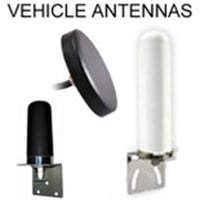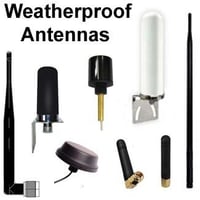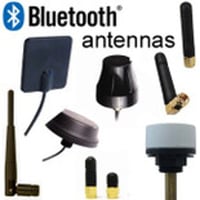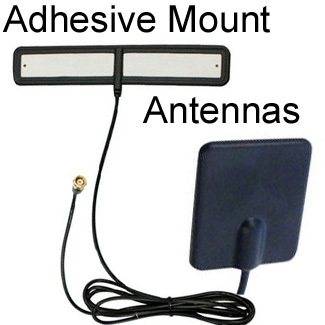Magnetic-Mount WiFi Antennas
Magnetic Mount Antennas
Our magnetic-mount antennas are all omni-directional: See signal patterns of omni-directional antennas.
All of our magnetic-mount antennas, and magnetic bases for antennas, have a direct ground: RF chassis ground through the antenna magnetic base.
The highest-gain magnetic-mount antenna that will remain up-right on a fast-moving vehicle is the 7dB magnetic-mount "whip" style antenna: The "whip" type of antenna bends in the wind.
Our 9dBi antenna with a magnetic mount will remain upright on a stationary vehicle (a vehicle that is not moving): These are stiff antennas that do not bend in the wind.
Positioning Antennas for Better Reception Using Mounts
The reception of your antenna depends largely on where you mount it. A powerful antenna mounted in the wrong place will often perform poorly compared to a weaker antenna mounted in the right place.
Generally speaking, the higher you mount the antenna, the better. If you are less than 50 miles from the signal source, you may do just fine mounting the antenna at ground level or on a window, with no extra effort required.
At farther distances from the signal source, you may want to consider an attic, balcony, or roof mount. Such a placement requires that you drill holes into the rafters or studs to securely mount the mast. Otherwise, the wind might blow your antenna away. When working on the roof or other elevated location, make sure to take adequate safety precautions or consider hiring a professional.
Most higher-end antennae come with a mounting system. If not, universal antenna mounts are widely available, as well as specialized mounts if your antenna has different needs. A rail mount can be a versatile solution. The antenna mount can be adjusted up and down or side-to-side along a rail and then clamped into place once the desired position is achieved. With a rail mount, you can fine-tune the position of your antenna for the best possible reception.
Once you have decided where to mount your antenna: If it is a directional antenna, you must face it in the right direction. If you don’t know the direction of the signal source, consult the web. Several sites and apps allow you to input your zip code and suggest what direction to point your antenna, as well as how high to mount it for optimal results.







